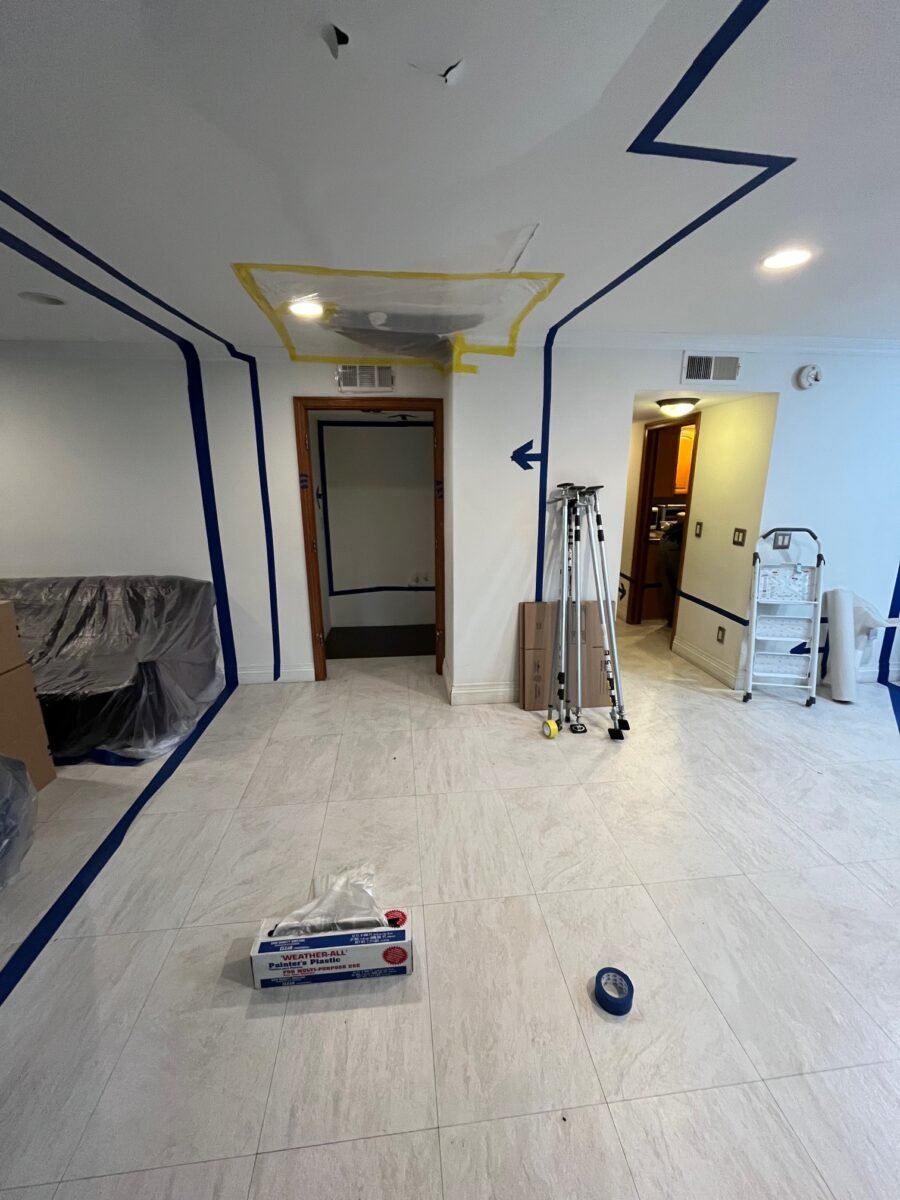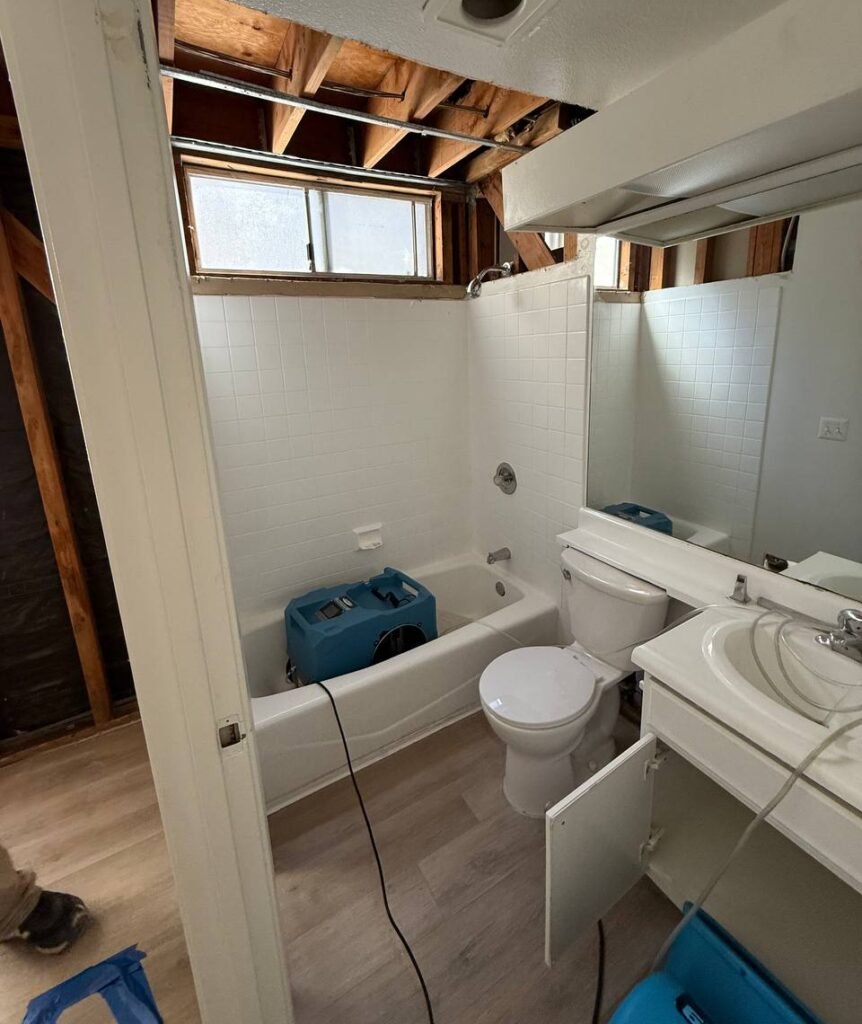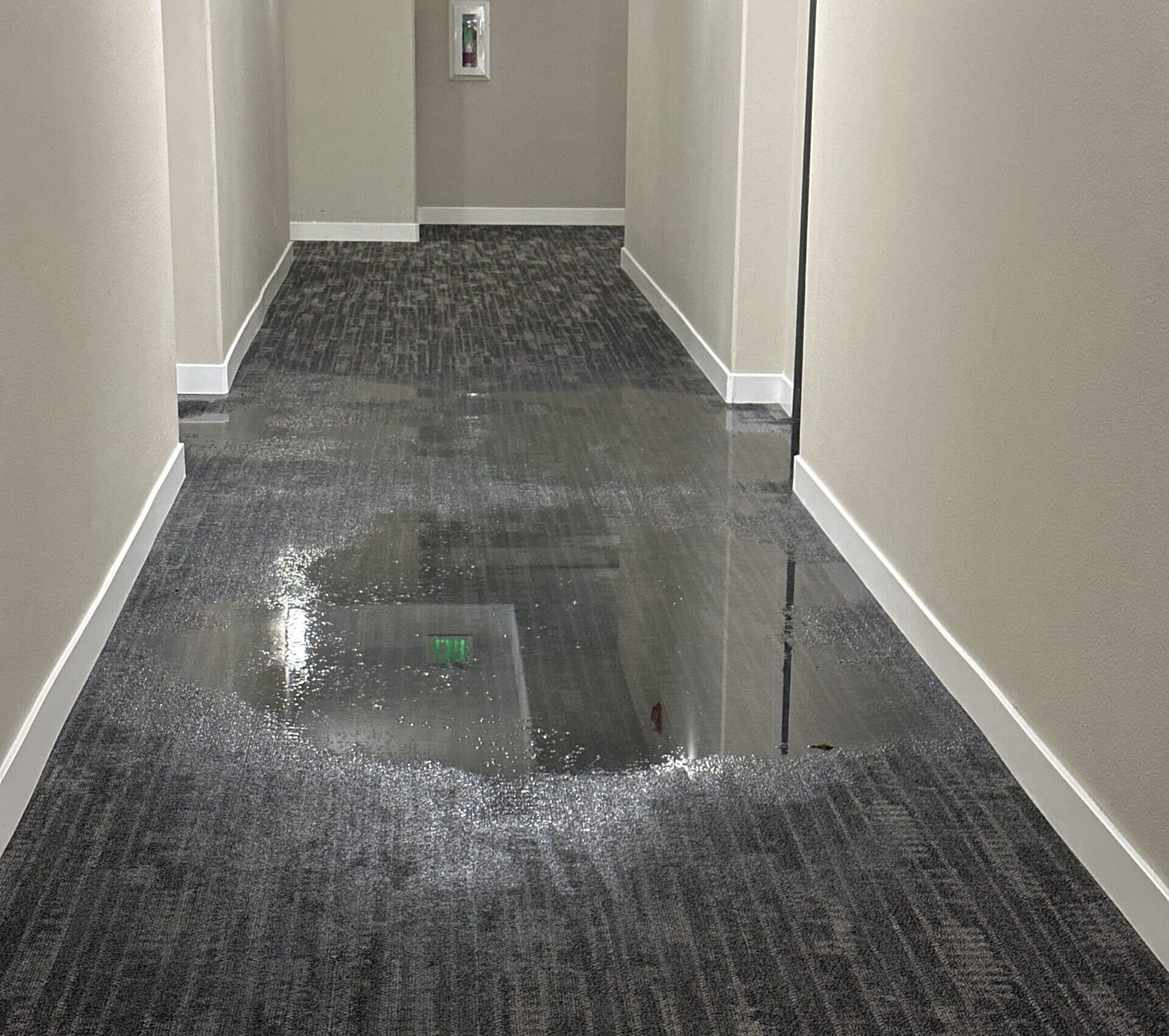Water Damage Restoration in Glendale, CA | 24/7 Cleanup & Drying
Fast, Local Help—Right When You Need It Most
Glendale stacks varied construction into tight terrain. Clay-tile roofs in Rossmoyne, steep drives in Adams Hill, oak-shaded homes in Verdugo Woodlands, and mid-rise condos near the Americana at Brand sit a few minutes apart yet behave very differently when water moves. Gravity sends leaks down stair cores and utility chases. Parapets and scuppers hold ponding over living rooms. Older copper lines and angle stops fail inside compact kitchens along Glenoaks. Our crews work these blocks daily.
Get Started
Service Form
We know Glendale isn’t an island—water, fire, and mold don’t stop at city limits. That’s why our team responds across the San Fernando Valley and greater Los Angeles County, from the canyons of Agoura Hills to the tree-lined neighborhoods of Burbank, the hillside homes of Calabasas, and the busy streets of North Hollywood, Encino, and beyond. Whether it’s a flood in Sherman Oaks, a fire in Tarzana, or a sudden sewage backup in Woodland Hills, our experience covers the full patchwork of Southern California’s neighborhoods.
No matter where disaster strikes—be it a sun-drenched condo near Westlake Village, a craftsman in Sylmar, or a tucked-away residence in Tujunga—our familiarity with local building styles, layouts, and the unique challenges posed by each area means we’re prepared for anything.
Neighborhood moisture patterns unique to Glendale
Rossmoyne / Kenneth Village. Clay-tile roofs and dormers push stormwater under underlayment at valleys and penetrations. Insulation in attic bays wets quietly; odor follows if cavities stay closed. Look for subtle visual signs—cracking, bubbling, or peeling paint on ceilings and walls, dark spots that seem to spread, and discoloration that deepens day by day. A musty odor is often the first tip-off that water has lingered out of sight.
Adams Hill. Steep lots and tight stair stacks give water a straight path to lower floors. Baseboard staining two rooms away from the source is common after deck or window events. Watch for unexpected spikes in your utility bills, the faint sound of running water when no tap is on, or a hissing noise that might signal a pinhole leak in a supply line. Mold growth, whether active or dormant, is a telltale sign of past or ongoing water trouble in hidden cavities.
Verdugo Woodlands / Chevy Chase Canyon. Decks over living space and shaded canyons slow natural drying. Ceiling cavities need dehumidification even after small leaks. Pay attention to any changes in paint texture, lingering damp smells, or odd spots that don’t dry out with time.
Downtown / Brand Blvd corridor. Shared stacks and upstairs appliance overflows move water laterally between units. Documentation and corridor protection matter as much as meters. Here, visual clues like peeling paint, unexplained stains, or swelling drywall in shared walls can point to water traveling sideways from the unit above or next door.
Glenoaks and Casa Verdugo tracts. Original copper or galvanized supply, older angle stops, and dishwasher lines drip behind toe-kicks and into subfloors. Be alert for floor discoloration, persistent dampness, or that musty whiff near kitchens and bathrooms—these hidden leaks often signal damage long before you see a puddle.

First two hours: stabilize, map, act
Make safe
Shut down the source, evaluate electrical risk, protect walk paths.
Map the wet envelope
Pin and pinless meters plus thermal imaging show where moisture migrated: behind baseboards, under flooring, into ceiling bays.
Set expectations
You see what dries in place, what needs relief openings, and what must be removed. Clear scope prevents scope creep.
Extract
Truck-mount or portable extraction reduces the humidity load so drying can work.
The Full Water Damage Restoration Playbook
Water events don’t come with a script, but the right sequence of services makes all the difference:
- Residential and Commercial Water Removal: Immediate extraction for homes, condos, and business suites keeps secondary damage in check.
- Water Damage Cleanup: Mud, silt, and contaminated debris are cleared out, with safety barriers for unaffected areas.
- Flood Damage Cleanup: Special protocols for storm surges and plumbing bursts; we document source and path for insurance clarity.
- Structural Drying: Subfloors, framing, and wall cavities get targeted airflow and dehumidification. Moisture readings guide every move.
- Crawl Space Remediation: Encapsulated or vented, crawl spaces get inspected and dried to prevent mold and structural rot.
- Basement Water Damage: Sump failure or lateral seepage? We pump, dry, and treat for odor and microbial risk.
- Water Damage Inspection: Every project starts with a thorough assessment—mapping moisture, photographing findings, and logging conditions.
- 24/7 Response Team: Dispatch is always live. After-hours or holiday calls don’t wait until morning.
- Estimates: Transparent, line-item estimates—no surprises.
Mitigation blueprint
Containment and HVAC isolation
We build room containments with zipper access, seal supply/return registers in the work zone, and protect stairs, elevators, and corridors. Multi-unit jobs get unit-specific logs.
Targeted access, not blanket demo
Baseboards or toe-kicks come off only where readings demand. Small, strategic openings ventilate wall or ceiling cavities. We avoid tearing out areas that can be saved.
Drying to objective targets
Commercial dehumidifiers and air movers create a closed system. Wall-cavity drying sticks, floor tents, or mat systems handle hardwood. Moisture goals are measured, logged, and shared.
Cleaning and sanitation
Salvageable non-porous and semi-porous surfaces are cleaned. Antimicrobial is applied where it supports cleaning. Source control and dry-down do the real work.
Transparent documentation
Photos, moisture maps, and equipment logs support a line-item estimate in Xactimate. Adjusters see the why behind each step, which reduces re-inspections.

What reviews reveal about water restoration service quality
Independent homeowner reviews offer the most candid look behind the scenes—far more meaningful than a bulleted guarantee or a bright wrap on a service truck rolling down Brand Blvd. What do patterns in five-star reviews and real testimonials reveal? The best restoration teams are measured by more than clean drying logs—they’re noticed for their communication, trustworthiness, and how they treat clients when circumstances (and ceilings) collapse.
Here’s what stands out most consistently:
Responsiveness and reliability
Top-rated crews respond quickly, from first contact to after-hours emergencies. Homeowners note when teams show up consistently, work weekends if needed, and keep appointments—even during complex, multi-week projects
Transparency and honesty
Owners appreciate when techs explain what’s wet, what isn’t, and lay out the facts using moisture meters and images rather than up-selling repairs. When a technician shows which insulation needs replacement and what can stay, trust is built.
Thorough documentation
The best-reviewed companies keep adjusters and clients informed with regular updates, work logs, and clear photos—ensuring nothing gets lost between demo day and insurance approval. Agencies like State Farm and Allstate breeze through claims when every step is documented.
Professionalism and respect
Whether it’s removing shoes, being mindful during a child’s nap, or managing noise and site cleanliness in a three-story Adams Hill walk-up, raving reviews often mention the crew’s courtesy.
Problem-solving attitude
Beyond technical skill, look for teams who are proactive—returning to check for hidden moisture or re-treating trouble spots, even if it means extra visits at no added cost.
Clear, fair pricing
Reviews highlight when estimates are itemized and reasonable—and when contractors avoid insurance gamesmanship or unnecessary upsells.
Local homeowners from Rossmoyne to Verdugo Woodlands regularly mention how comprehensive planning, open communication, and measured decisions set top firms apart—just as much as the technical dry-out and remediation work itself.
In short, consistently positive reviews show when a restoration company goes beyond restoring materials—they help restore peace of mind and trust after the floodwaters recede.
Credentials that matter
Water restoration technicians working in the Glendale area typically hold IICRC (Institute of Inspection, Cleaning and Restoration Certification) credentials—an industry standard. These designations ensure training in proper water extraction, drying techniques, and safety protocols.
IICRC-certified techs know how to handle Category 1–3 water, document loss conditions for insurance, and safely address hazards like lead, asbestos, or microbial growth. Look for these credentials to ensure your home is managed by professionals who meet national standards for restoration and documentation.

Licensing requirements for water damage restoration in California
Any contractor performing water damage restoration work in California must hold a valid license from the California State License Board (CSLB) if the project value exceeds $500 or if the work involves altering or reconstructing building materials. This covers nearly all water mitigation and structural drying jobs, from drywall removal to cabinet repair.
By law, restoration activities like demolition, drying, and repairs—including plumbing or electrical associated with the loss—require the same CSLB oversight as other specialty trades. Licensed professionals bring more than expertise in drying; they understand code compliance, permitting, and documentation needed for insurance claims.
When you partner with a licensed contractor, you benefit from:
- Familiarity with the insurance process, adjusters, and required documentation.
- Proper bonding and insurance for your protection.
- Broad technical know-how that extends beyond drying to building science, repairs, and regulatory compliance—including lead, asbestos, and industry safety standards.
Always verify credentials on the CSLB website before hiring. Proper licensing isn’t just bureaucratic—it protects your investment and ensures the job is performed to California code.
Costs: variables that change the number (not a quote)
Area and access. One room with shallow wetting is simpler than a two-level Adams Hill migration through a stairwell.
Materials. Plaster, insulation, stone/mortar beds, and premium millwork increase setup and dry time.
Containment complexity. Tight corridors, elevators, and quiet hours add protection and staging steps.
After-hours or phased work. Needed for HOAs and commercial corridors near Brand Blvd.
Cause repairs. Roofing, membrane, plumbing, or electrical fixes may involve outside trades; we coordinate sequencing.
Typical ranges seen locally: extraction $0.30–$0.75 per sq ft; containment/protection $150–$650 per chamber; air mover $25–$45/day; LGR dehumidifier $80–$130/day; HEPA negative-air $95–$170/day; selective drywall removal and haul-off $2.75–$5.75 per sq ft; wet insulation removal $1.50–$3.75 per sq ft; baseboard/toe-kick R&R $6–$12 per linear foot. Moisture monitoring and photo logs are included within daily service lines.
Do you handle crawl space and basement water issues?
Absolutely—we remediate water and moisture in crawl spaces and basements throughout Glendale, including tough, low-clearance areas near Kenneth Village or terraced lots found in Adams Hill. Substructure flooding and foundation seepage are increasingly common after heavy storms or plumbing failures.
Crawl spaces
We extract standing water, remove wet insulation, set up drying with proper containment, and address soil vapor as needed. Subfloor, pier, and vapor barrier assessments are included, with thermal imaging and moisture mapping provided for reporting.
Basements
Whether water seeps in through foundation cracks on Verdugo Road or floods from a sump pump failure, we handle targeted removal, drying, and (if required) monitor for microbial growth. All services are staged to minimize disruption and meet local code and HOA requirements.
Monitoring & verification
Moisture logs and photo documentation are updated daily, so both you and your insurer can track restoration progress and confirm materials are fully dry before reconstruction.
If you suspect water is pooling beneath your property, give us a call—we’ll inspect and recommend correction before small issues become major repairs.
What is a water damage preventative inspection package?
Think of a water damage preventative inspection as a home’s annual checkup—targeted, thorough, and attuned to the quirks of Glendale properties. It goes far beyond the one-time walk-through at purchase. Instead, a trained technician surveys your property from attic to crawlspace, identifying areas prone to leaks, seepage, or undetected moisture. Typical steps include:
- Inspecting roofs, decks, scuppers, and wall penetrations for early signs of trouble.
- Scanning supply lines, valves, washing machine hoses, and angle stops for brittle or outdated materials.
- Checking window caulking, stucco, and flashing for vulnerability after storms (especially along Brand and Broadway).
- Measuring water pressure at key fixtures to spot accelerated wear risks.
- Reviewing bathroom and laundry ventilation—ducting, humidity sensors, attic fans—to prevent chronic dampness.
- Auditing for prior repairs or patches that may mask slow leaks behind finishes.
You receive a detailed report noting any early-stage issues, prioritized fixes, and maintenance tips matched to local codes. Acting on these recommendations now means fewer midnight emergencies, smoother insurance reviews, and longer material life. Periodic re-inspection—yearly or after upgrades—keeps the property’s defenses sharp, and leaves no damp patch unchecked.
Why Glendale trusts our water damage response
- Rapid mobilization: We’re on call 24/7, ready to dispatch with experienced crews familiar with Glendale’s unique building mix and access challenges.
- Licensed & insured: Our work is fully compliant and standards-driven—no shortcuts, no surprises.
- Both homes & businesses: From single-family bungalows to multi-unit condos and commercial spaces, our teams know how to navigate HOAs, property management, and shared infrastructure.
- Full transparency: You get clear, step-by-step updates, thorough documentation, and insurance-ready estimates.
Links to Our Other Restoration Services in Glendale
Internal Links
Glendale Sewer Damage Cleanup
Safe sewer and biohazard cleanup.
Glendale Fire Damage Restoration
Complete fire and smoke restoration.
Glendale Mold Remediation
Certified mold removal with free estimates.
Glendale Hub Page
All restoration services available in Glendale.
